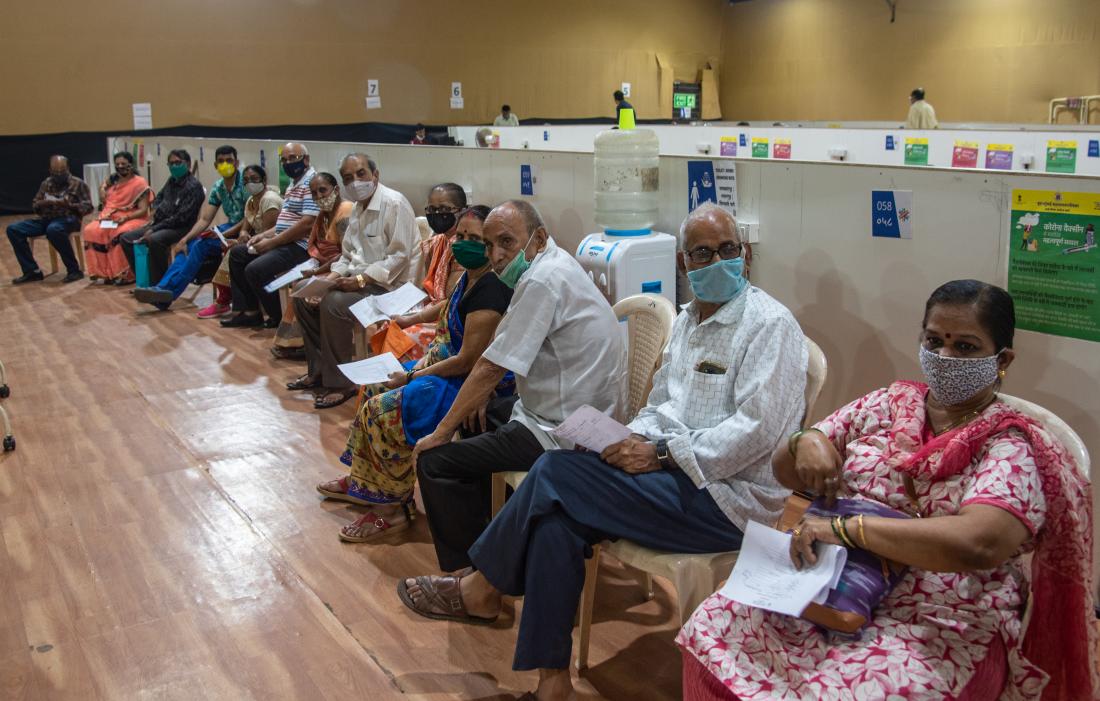De-biasing Over-Optimism about Covid-19 Risks to Limit Vulnerable Individuals' Risky Behavior in India
- Adults
- Communicable diseases
- Non-communicable diseases
- Health outcomes
- Take-up of program/social service/healthy behavior
- Information
An important part of the policy response to a pandemic is to provide information about health risks and protective measures individuals can take to mitigate those risks, yet determining the most effective way to present such information can be challenging. Researchers are evaluating the impact of providing different types of information about the health risks of Covid-19 on individuals’ risky behavior among diabetic and hypertensive individuals in Tamil Nadu, India, with special attention to de-biasing over-optimism about personal health risk.
Policy issue
The Covid-19 pandemic is a major public health crisis, and low-and-middle income countries face additional challenges because of weaker health care systems and other social and environmental factors that influence population health. An important part of the policy response to a pandemic is to provide information about health risks and protective measures individuals can take to mitigate those risks. However, presenting health information effectively can be challenging due to individual behavioral biases that may lead individuals to underestimate risks to their health. In particular, even people with accurate beliefs around the health risks of others in their age group or with shared health conditions may underestimate risks to their own health due to over-optimism. Researchers have shown that such over-optimism can lead individuals to engage in riskier behaviors and to take fewer protective health measures. Can providing health information in a way that challenges over-optimistic beliefs reduce risky behavior during the Covid-19 pandemic?
Context of the evaluation
Tamil Nadu, where this study takes place, is one of the states with the highest prevalence of diabetes in India at up to 18.6 percent in some urban areas. India overall has a high prevalence of diabetes and hypertension, with the second highest number of diabetic people in the world at about 69 million individuals in 2015. 1 As with other health conditions, individuals with diabetes or hypertension have a higher mortality risk from Covid-19, and these conditions require consistent management (i.e. regular doctor appointments, exercise, etc.) that the pandemic may disrupt. Providing information on the risks of Covid-19 to diabetic and hypertensive individuals is especially important given their increased vulnerability and the need for them to take protective measures like social distancing and handwashing.

Details of the intervention
Researchers evaluated the impact of providing different types of information around the health risks of Covid-19 on individual willingness to practice protective risk-reducing behaviors among diabetic and hypertensive individuals in Coimbatore, Tamil Nadu. Beginning in September 2020, researchers randomly assigned 3,680 diabetic and hypertensive individuals aged forty to seventy years old to one of four groups:
-
Health risk information: Participants in this group received health risk information on the fatality rate from Covid-19 for their own age group and for individuals with the same pre-existing health conditions, along with basic information on ways to avoid Covid-19 infection and the importance of managing one’s health conditions during a pandemic.
-
Health risk information + reducing over-optimistic biases: Along with the above information, participants received additional information aimed at reducing their over-optimistic perception of their own health risk from Covid-19. This included a description of how common over-optimistic beliefs are and the consequence of this.
-
Health risk information + information on a lower-risk group: Participants received the same information as the first group, plus additional information about the Covid-19 fatality rate of a similar but lower-risk group than their own (i.e. the next-youngest age group). While people may rationalize that they are healthier than other diabetics their age, it would be harder to justify that they are healthier than younger people with the same health conditions, so this additional information could challenge beliefs around personal risk.
-
Comparison: Participants in the comparison group received the same basic health information on avoiding Covid-19 infection and managing pre-existing health conditions, but did not receive any additional information on fatality rates or messages aimed at reducing over-optimistic biases.
Researchers shared all of the above information with participants over the phone in an initial survey. Participants also answered questions regarding their overall health, diabetes symptoms and management, Covid-19 symptoms, and Covid-19 risk behaviors such as how often they interacted with non-household members or wore a mask. In addition to these longer surveys, participants also received brief 3-minute complementary surveys via automated phone calls each week for two months. These short surveys also asked about Covid-19 symptoms and risk behaviors.
After all surveys and informational interventions were completed, researchers shared with participants a toll-free number they could call to receive more information on protecting themselves against Covid-19. Researchers tracked who utilized the toll-free number in order to measure levels of demand for more health information.
Results and policy lessons
Research ongoing; results forthcoming.
Unnikrishnan, Ranjit, Ranjit Mohan Anjana, and Viswanathan Mohan. 2016. “Diabetes mellitus and its complications in India”. Nature Reviews Endocrinology, 12: 357–370. https://doi.org/10.1038/nrendo.2016.53